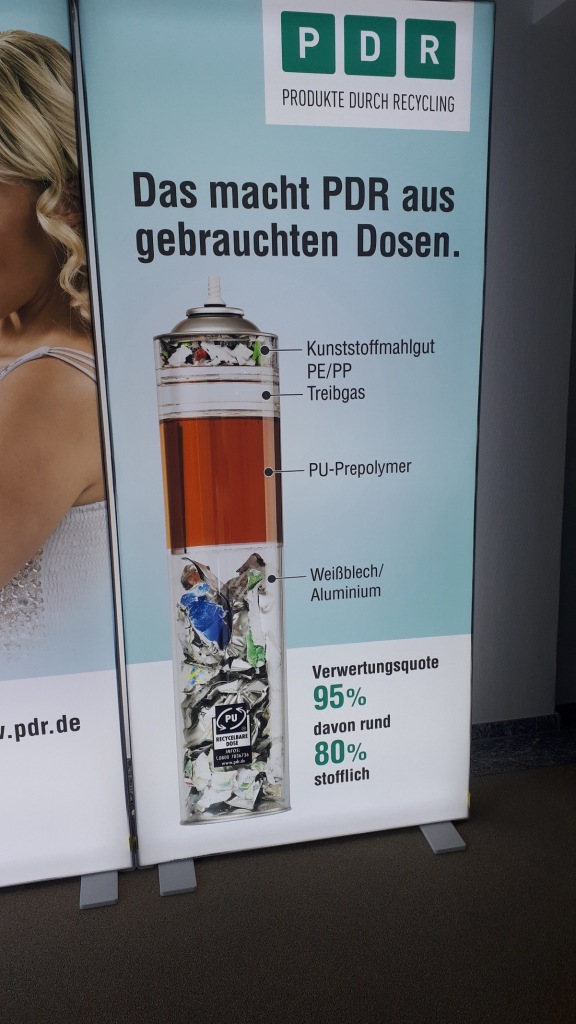Andrus Ööpik, Peep Tammistu and Karin Viipsi from Henkel Balti development labratory in Pärnu visited with the help of the project LIFE Fit for REACH PDR factory in Germany to discuss future cooperation.
Henkel is the leading supplier of the one component polyurethane (PU) foams globally. Their main production facility for PU foam is located in Estonia. Henkel Balti has joined the project with the aim to reduce hazardous waste, substitute hazardous substances, improve quality control and use resources more efficiently.

Andrus, Peep and Karin with the PDR team
PDR is a waste recycling company located in the small town of Thurnau in Upper Franconia in Germany. PDR has been a major player in material recycling for 25 years. With highly developed plant, PDR achieves a recovery rate of more than 95 percent when recycling polyurethane foam cans (80% of this in materials) and recycling HP print cartridges (70% of this in materials).
The legislature has classified emptied PU foam cans as hazardous waste and deemed their recycling to be mandatory in Germany. European PU foam can manufacturers which produce for the German market have established PDR to enable them to meet their product responsibilities. Germany is known to be the only country where polyurethane foam cans are recycled, elsewhere they are going to incineration or landfill. A well functioning collection network for PU foam cans has been developed in the country. All cans that have been collected go through a sorting process where the labeling and condition of the cans are carefully checked. Cans that have already dried with foam or contain water are not suitable for recycling. Both the packaging and the waste material in the cans will be recycled.

Collection bin for the PU foam cans at the gate of PDR
Briefly about the process. The cans are mechanically shredded out of contact with air. The liquid contents and the metal can parts (aluminium and tin plate) drop into a solvent bath. A rinsing screw brings them out again and pre-washes them with the aid of rinsing jets. Further washing and drying stages follow. A metal cutter sorts out the cleaned and dried aluminium and tin plate. The produced prepolymer solvent mixture is filtered several times and separated into prepolymer and solvent. The propellants are extracted by suction and fluidised by pressure. The plastic caps of the cans are coarsely ground for the plastics compounding industry. The products of recycling process are prepolymer, gas, plastic grist PE/PP, tin plate and aluminium. The recycled prepolymer and gas can be reused for the production of PU foam.
“Collaboration with PDR was an eye-opener. The activities deriving from this cooperation are closely related to the topics in the project – recycling and reusing hazardous waste,” said Karin Viipsi, Henkel Balti’s product development chemist.

Materials and their proportions from recycling PU foam cans.
The study visit was co-funded by LIFE Fit for REACH, which co-finances activities aiming to reduce and reuse hazardous waste.